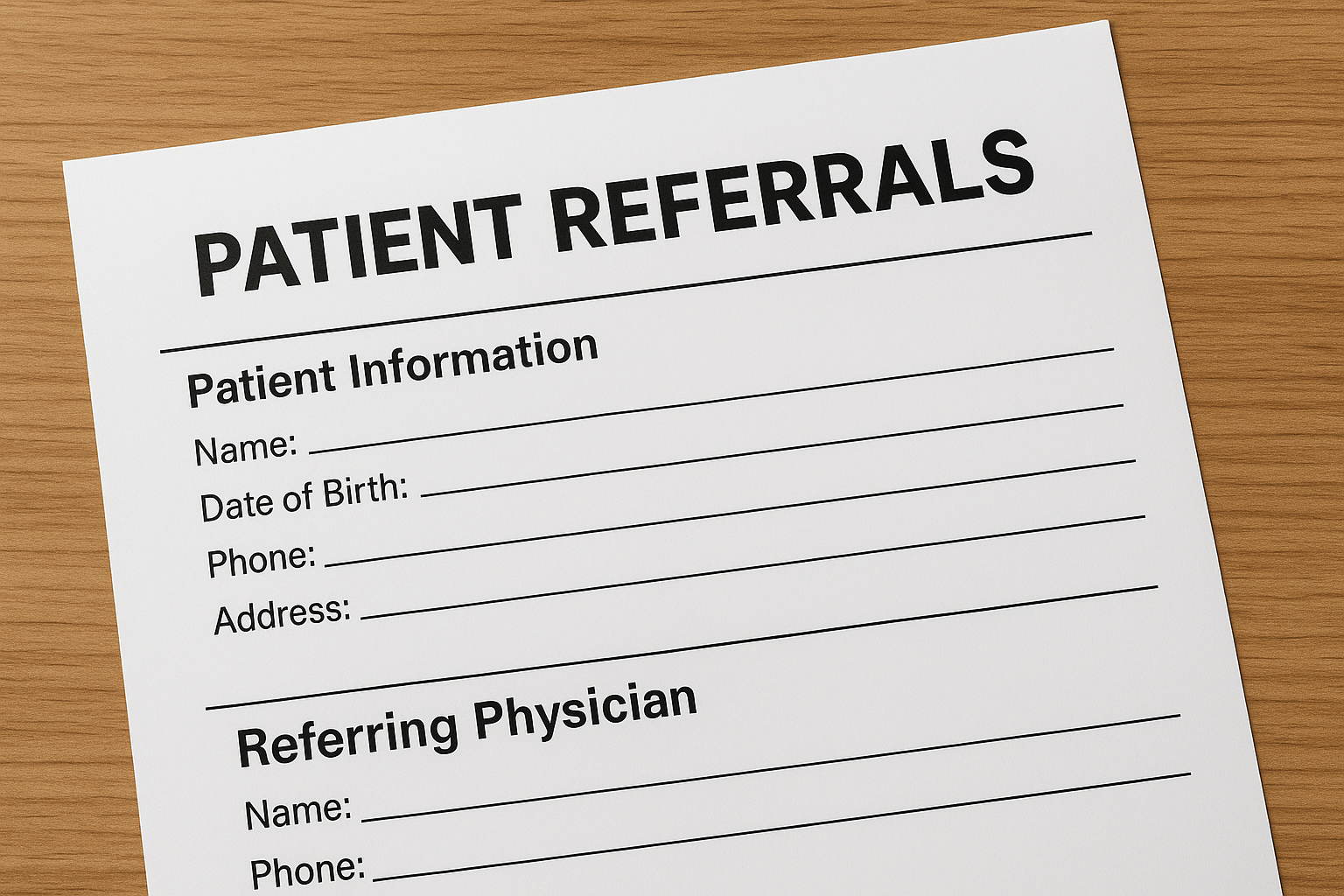Simplify coordination with specialists by following these best practices for creating, submitting, and tracking patient referrals within SleepEz.
1. Determine the Need for Referral
Before initiating a referral, confirm the clinical indication—such as complex sleep apnea management, OSA surgery evaluation, or adjunctive therapy consultation. Document the patient’s diagnosis, relevant history, and sleep study findings to justify the referral.
2. Initiate the Referral
In your Provider Portal’s Referrals section:
- Select New Referral.
- Choose the specialist type (e.g., ENT surgeon, neurologist, pulmonologist).
- Enter patient demographics and contact details.
- Attach supporting documents: sleep study report, physician notes, prescription.
- Specify urgency and preferred consultation date range.
3. Submit for Insurance Authorization
If your patient’s plan requires prior authorization, click Request Authorization in the referral workflow. SleepEz will bundle the clinical notes and submit to the insurer. You can monitor status updates—“Pending,” “Approved,” or “Denied”—directly in the portal.
4. Notify the Patient
Once the referral is submitted, inform your patient via secure message or phone call. Provide:
- Specialist contact information and location.
- Appointment instructions and any preparatory requirements.
- Insurance approval details and patient responsibility, if applicable.
5. Track Referral Status
In the Referrals dashboard, use filters to view all active referrals. Status indicators help you see at a glance:
- Draft: Not yet sent.
- Submitted: Awaiting specialist scheduling.
- Authorized: Insurance approval received.
- Completed: Consultation occurred.
6. Manage Modifications & Cancellations
If details change—such as specialist choice or appointment date—click the referral record and select Edit. To cancel, choose Void Referral and document the reason for audit purposes.
7. Best Practices
- Always attach a clear clinical summary to prevent delays.
- Confirm specialist network status to avoid out-of-network charges.
- Set reminders to follow up if you haven’t received status updates within 7 days.
- Maintain a consistent naming convention for referral notes to streamline audits.
By following these streamlined steps, you’ll ensure efficient referral handling, rapid specialist engagement, and better continuity of care for your patients.
